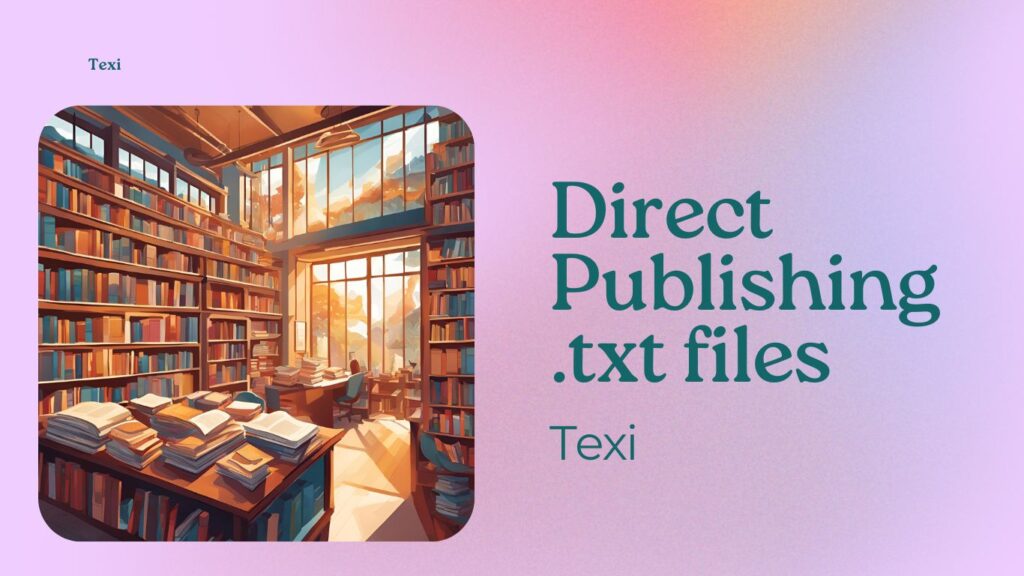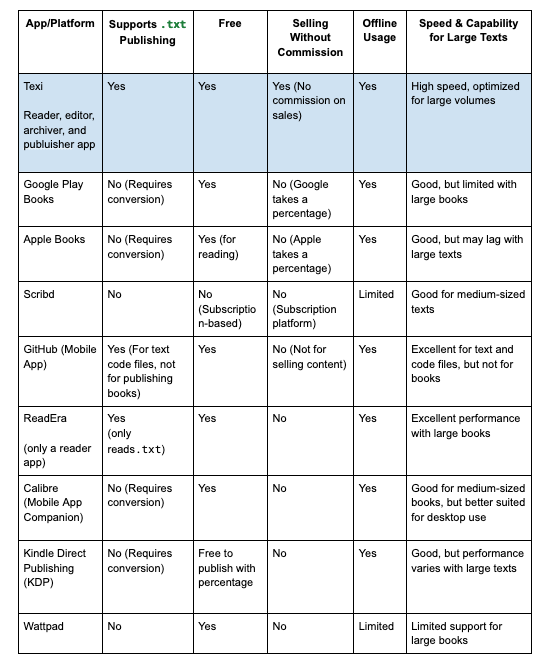
Preserving Our Literary Heritage: Standardizing Writings for Future Generations
Writings are the most enduring and valuable legacy passed down from our ancestors, and they will continue to be handed down from us to future generations. They capture the wisdom, knowledge, and cultural identity of human civilizations, serving as a bridge across time. As such, preserving these written works is vital, not only for our understanding of the past but also for the enrichment of future generations. Texi is committed to safeguarding this precious heritage by ensuring that writings remain accessible and undamaged by the passage of time.
The Modern Challenge: Fragmented Digital Preservation
In today’s world, most writings are digitally recorded, stored, and shared. This digital shift offers an opportunity to preserve vast amounts of knowledge, but it also presents a significant challenge: the diversity of digital formats. Countless companies and platforms have introduced proprietary formats for storing digital content, each vying for dominance. This competitive environment has resulted in a chaotic landscape of incompatible formats that threaten the long-term preservation of written works.
Documents saved in one format may become unreadable as technology evolves or companies change their strategies. This fragmentation risks losing access to our collective writings, as formats become obsolete or are abandoned by their creators. To truly protect our literary heritage, we need a solution that transcends corporate interests and technical changes.
Texi’s Mission: Standardization for Sustainability
Texi seeks to eliminate this chaos by preserving writings in a standardized form that can endure for generations. Our platform is dedicated to storing and sharing written content using a single, enduring format, ensuring that today’s writings remain accessible tomorrow. By focusing on standardization, Texi allows for a consistent method of recording and accessing written material, no matter how technology evolves.
This approach not only simplifies the process of preserving documents but also ensures that future generations will have access to the thoughts, ideas, and knowledge that have been carefully documented over time. With Texi, there is no risk of valuable works being lost to obsolete formats or disappearing into the digital ether.
The Benefits of a Standardized Format
Using a standardized format for all writings offers several key advantages:
- Longevity: A single, enduring format ensures that writings remain readable and accessible for decades, even as digital storage and reading devices change.
- Interoperability: Standardization makes it easy to share and transfer documents across different platforms without compatibility issues, promoting a more open and inclusive exchange of ideas.
- Simplicity: By focusing on a standardized format, we reduce the complexity of managing digital archives, making it easier for individuals and organizations to store, maintain, and access their writings.
- Preservation of Human Thought: Standardizing written works ensures that human thoughts and ideas are preserved accurately, without being lost in the shuffle of ever-changing technology.
A Commitment to Future Generations
At Texi, our commitment extends beyond technology—it is a commitment to the preservation of human achievement. We believe that the writings we create today are a gift to the future, a testament to our collective understanding, imagination, and creativity. By standardizing the way these writings are recorded, we aim to ensure that they remain accessible and meaningful for future generations, enabling them to build upon the knowledge of the past.
Texi is more than a platform; it is a movement towards safeguarding our shared heritage. By eliminating the confusion of multiple formats and embracing a single, enduring standard, Texi protects the achievements of human civilization—ensuring that the voices of today continue to resonate far into the future.

